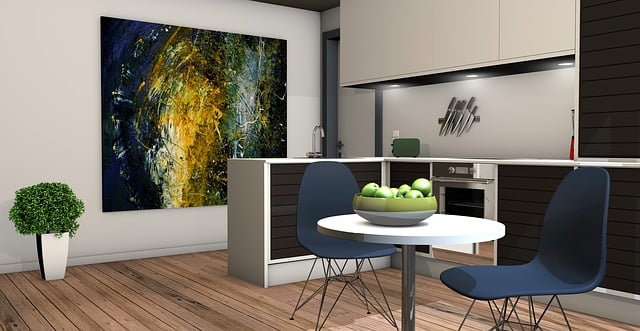
Before 2020, virtual tours were considered optional, like dessert, but now they have become indispensable due to the prevalence of “social distancing” in our daily lives.
Due to the Covid-19 pandemic, the implementation of new safety guidelines has altered our approach in selling real estate. Organizing open houses and granting in-person tours to potential buyers, who are unlikely to make a purchase, are no longer deemed safe. Currently, virtual platforms have become the preferred choice for numerous enterprises, including the real estate industry.
Virtual tours have been available for a while, which is fortunate since they enable you to continue selling houses in a virtual manner. If you haven’t done so yet, now is the perfect opportunity to fully embrace virtual tours. Here is the essential information you should be aware of.
Virtual Real Estate Tour
A virtual real estate tour is a type of walk-through of a property that can be done remotely. This tour is typically conducted using video or specialized software that combines still, panoramic images.
Virtual tours differ from slideshows in that they typically include interactive features, such as the ability to explore various rooms by clicking on floor plan hotspots or to view a full 360-degree image of a room from top to bottom through panning.
Virtual tours can be done in various ways, yet the most prevalent methods include:
The Video Walk-Through option involves creating a basic property video, allowing viewers to virtually tour the property through the video. This option is the simplest as you can pre-record the video and distribute it across various platforms such as your website, email, social media pages, and the MLS.
To create a 360 Degree Interactive experience, follow these steps: First, place a 360 degree camera on a rotating base attached to a tripod. Use this setup to capture a series of photos of the entire room. Next, use software to combine these photos seamlessly. To explore the room and property, viewers can use the same software. Although 360 Degree Interactive is becoming more popular, it is comparatively expensive and may sometimes result in distorted angles.
Show By Proxy – In this type of tour, you personally hold the camera and present the property to a live audience, similar to the video walk-through option.
A Show by Proxy is typically conducted on social media platforms such as Facebook or Instagram, or conferencing applications like Zoom or Skype. This allows viewers to ask questions and make requests for a closer look at a particular feature. Additionally, a 360-degree camera can be employed during a Show by Proxy, granting the viewer greater control over their perspective during a virtual tour.
Tips for Virtual Real Estate Tours
1. Choose the Location
In order to set up your camera and stage the space, it is advisable to first walk through the property yourself and identify its most prominent features and angles. This will enable you to determine the most suitable way to explore the property during a video tour, including which door to enter through initially.
When considering an interactive tour, it is worth contemplating the ideal placement for your 360 degree camera. While positioning it in the middle of the room may seem like the logical choice in most cases, not every room appears visually appealing from that perspective. Certain rooms exhibit a more favorable appearance when captured from an angle.
Create a checklist of rooms that you would like to incorporate into your tour, ensuring that none are omitted, even the smaller and seemingly less significant spaces such as laundry areas or closets. It is important to showcase every corner of the house, including linen closets, as potential buyers are keen on observing the entire property. By adding more rooms to the tour, you will enhance its appeal and make it more captivating.
2. Stage the Space
Now, let’s have a discussion on staging.
In order to effectively sell any space, staging plays a crucial role as numerous buyers struggle to envision the potential of an empty area. This aspect becomes particularly vital during virtual tours, where the presence of furniture is necessary to offer scale and context to the buyers.
3. Gather Your Equipment
The fun part is about to begin.
While it is possible to hire someone for the job, you might consider doing your own virtual tour instead. The good news is that a basic virtual tour can be easily created using just a smartphone. In addition, you may find it helpful to use a stabilizer to prevent camera shaking, along with extra batteries, an SD storage card, and a video editing app.
If you aim to improve the production quality, you will probably need to spend money on the items listed below:
- A 360 degree camera
- A tripod with rotating base
If you are planning to do a 360-degree tour, you will also have to subscribe to a monthly service such as Asteroom, CloudPano, Cupix, or Matterport.
4. Do a Test Run
Take the opportunity to do two tours of the property. Consider the first tour as a trial run. Were you able to capture important features/ elements that will be of interest to your buyer, such as fireplaces, views, or kitchen appliances?
Have you refrained from capturing a self-portrait using any of the reflective surfaces? Would it be advisable to alter the placement of your camera? Capturing from lower angles generally results in a more aesthetically pleasing view (as well as creating the illusion of a more spacious room) compared to filming at eye level.
Examine the images you have captured and jot down observations on ways to enhance a forthcoming photograph.
5. Chase the Light
When creating a virtual tour, ensure that your surroundings are adequately illuminated. While natural light is the most ideal, it is essential to avoid conducting the tour during midday when the intense sunlight can cause overexposure and distort the appearance of your property. Instead, opt for conducting the tour shortly before sunset to capture the inviting and warm radiance emitted by the setting sun.
6. Produce for your Buyer Market
Consider your target market. Does your property reside in a bustling city or a serene suburban area? What demographics characterize the residents in the vicinity? Is your property conveniently situated near a university, potentially appealing to students? Alternatively, is your property located in a tranquil family-oriented suburb adjacent to the city?
Understanding these factors will affect the production of your real estate video tour, including aspects such as music and pace, as they ultimately determine the pace and nature of the tour.
Side notes
Given the current safety restrictions, virtual tours have become even more important for marketing a property. Follow these tips to conduct an exciting and immersive tour that will captivate potential buyers.

